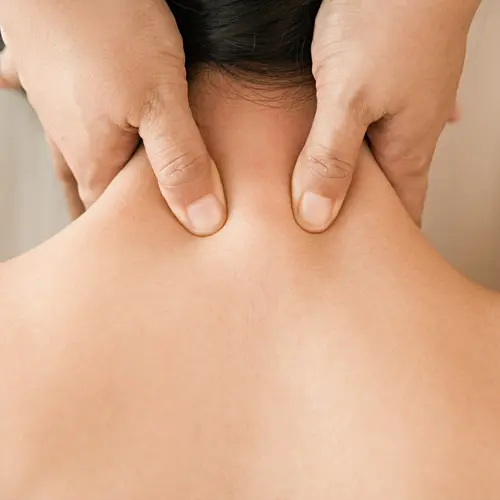July 3, 2000 -- When 10-year-old Amanda Mellencamp recently awoke in the middle of the night complaining of a tummy ache, her mother Ann didn't offer her Pepto-Bismol or simply invite her to snuggle up. Instead, she made a rather unorthodox suggestion: "Why don't you practice your imagery?" she asked.
So Amanda did. First she pictured a big, orange balloon inflating in her stomach and causing her stomach to hurt. Then she imagined herself drinking hot cinnamon tea to melt the balloon. As the imaginary balloon slowly disappeared, so did Amanda's pain. Twenty minutes later she was fast asleep, and the next day she felt fine.
Amanda is one of a growing number of children who are using mind-body techniques like guided imagery to cope with physical ailments. These therapies have become increasingly popular with adults in the past few years; now researchers are examining how well they might work with kids.
In fact, some experts say that kids may be even better than adults at using their imaginations to ease pain. "Adults will say, 'What do you mean there's a kitten? I don't see a kitten,' " says Susan J. Nathan, a Laguna Hills, Calif., psychologist who specializes in guided imagery. "Kids will jump right in and say, 'Oh yes, I see it -- and it has a white tail.' This type of play helps them relax, and we know that when people are in a relaxed state, they experience less pain."
Amanda learned how to practice guided imagery and relaxation techniques as part of a University of Arizona study investigating how these therapies might relieve recurrent abdominal pain (RAP). The university recently won a $5 million grant from the National Institutes of Health to establish the nation's first research center on alternative therapies for children. The RAP study is being run jointly by the university's Children's Research Center and the Program in Integrative Medicine, headed by Andrew Weil, MD.
The Mind-Body Connection
RAP afflicts as many as 5% of all kids and is notoriously difficult to cure. About half the cases can be attributed to treatable ailments like lactose intolerance, gastroesophageal reflux (known as heartburn in adults), and constipation, says William Cochran, MD, a pediatric gastroenterologist at the Geisinger Clinic in Danville, Penn. As for the other half, he says, it's difficult to tease out the cause.
Many experts, though, believe that there are some psychological factors at work. "The cause probably has something to do with stress, which can affect the nerves connected to the intestines and cause cramping," says Thomas M. Ball, MD, MPH, an assistant professor of clinical pediatrics at the University of Arizona and principal investigator of the study. That's one reason why researchers suspect that mind-body techniques might make a difference.
Another is that guided imagery -- which can be as simple as visualizing a beautiful beach or as complex as picturing immune cells attacking cancer cells -- has already been used successfully to help people cope with various types of pain. For instance, among a group of 94 adult cancer patients, those who received imagery training reported less pain than those who didn't, according to a study published in the November 1995 issue of the journal Pain. What's more, a study in the October 1996 issue of the Journal of Developmental and Behavioral Pediatrics found that guided imagery lowered postoperative pain in children. The use of guided imagery or relaxation techniques to treat the stubborn symptoms of RAP, however, has never been studied.
Mysterious Pain
Amanda became part of the University of Arizona study early this year. Her experience with RAP was fairly typical. She first suffered cramping and bloating last Thanksgiving weekend, then continued to have stomachaches once or twice a week. Several weeks later she started having pain every other day. "It really began to dig into her activities like Girl Scouts and gymnastics," says Ann Mellencamp. "She used to love to go to sleepovers, but now she's more reluctant." When a battery of tests ruled out the usual suspects, Amanda was diagnosed with RAP and referred to the researchers at the University of Arizona.
During the study, the children have four sessions with a health psychologist. Half of them learn deep-breathing relaxation techniques, while the other half are schooled in guided imagery and muscle relaxation. The children are then instructed to practice the guided imagery twice a day, every day, and during times of distress. They also keep a diary of their daily occurrences of pain.
"The daily practice is aimed at preventing abdominal pain, but they can also use guided imagery to cope when they get in a stressful situation and have the pain," Ball says. Exactly how it works is uncertain, he says, but it may be that stress inhibits food from moving smoothly through the digestive system, and that relaxation techniques, by relieving the stress, may ease digestion and thus ease the pain, too.
Based on his own experience treating RAP, Cochran -- who sometimes refers patients to therapists who teach them relaxation techniques -- thinks the Arizona study makes a lot of sense. "It's a reasonable approach to treating RAP," he says. "I look forward to the results of the study." Since the study will continue through fall of 2001, the answers are still some time away.
In the meantime, guided imagery may already be helping patients like Amanda. So far, the balloon-and-hot-tea scenario has been working pretty well for her. Her stomachaches occur less often now, and they upset her less because she knows how to cope. "Instead of crying," she says, "I'm taking care of the pain."
